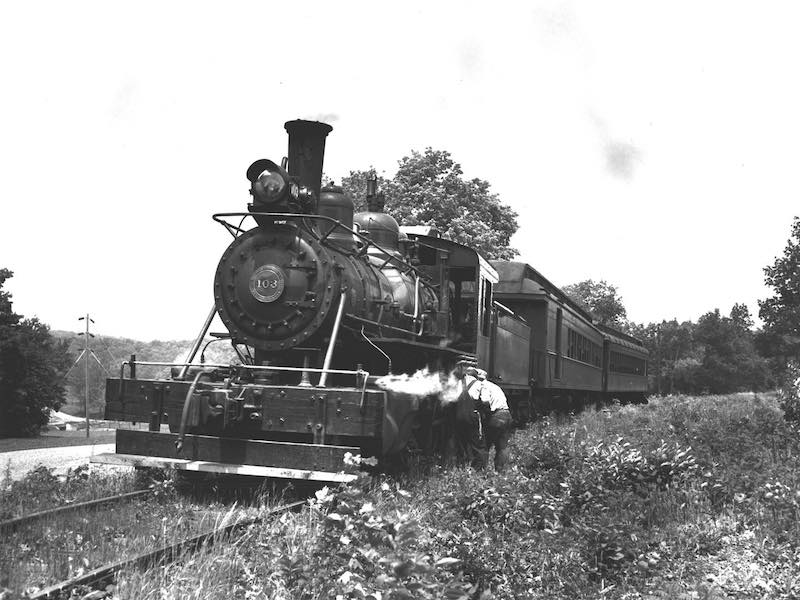By Justin Franz
The Railroad Museum of New England announced Tuesday that it was launching a fundraising campaign to restore a 2-6-2 that was built for an Alabama logging road before becoming one of the first steam locomotives to operate in the Northeast in the post-steam era.
The museum said it wanted to raise $375,000 for the restoration and would not begin disassembling the major components of the locomotive until at least $175,000 was raised.
Locomotive 103 was built for the Sumter & Choctaw Railroad in November 1925. After years of service in Alabama, the locomotive was sold to the Empire State Railway Museum and ran on the Middletown & New Jersey Railroad in New York from 1961 until 1966. The locomotive then moved to the Valley Railroad in Connecticut, where it ran from 1971 until 1975. The locomotive was then put on display in Essex, Conn. In 1985, it was transferred to the Railroad Museum of New England and later moved to the Naugatuck Railroad.
“Almost 100 years since it left the factory in Philadelphia, and 50 years since it last operated, 103 is ready for restoration, it is time to hear her whistle echo off the Litchfield Hills and through the Naugatuck River Valley,” RRMNE officials said Tuesday.
In February 2020, the locomotive was evaluated at the Naugatuck’s shop in Thomaston, Conn., which revealed it was in “good condition” and a candidate worthy of restoration. The locomotive will specifically need work on its boiler and firebox, cylinders and driving gear, wheels and axles. The locomotive will also get a rebuilt tender and be converted to burn “liquid fuel” rather than coal.
While parts of the locomotive will be restored in Thomaston, some major components will be sent off-site: The boiler will be rebuilt at Maine Locomotive & Machine in Alna, Maine, and the frame, cylinders and wheels will be worked on at the Western Maryland Scenic Railroad shops in Ridgeley, W.V.
“Our museum will utilize the 103 restoration project and return to operation as a catalyst to encourage volunteerism, museum membership, become a community ambassador, and teach a new generation about these amazing machines,” the museum said. “The sensory experience that a steam locomotive invokes is unique and awe-inspiring. RMNE will create new partnerships in preservation to bring this historic piece of Americana back to life.”
For more information and to learn how to donate, visit the RRMNE website.



